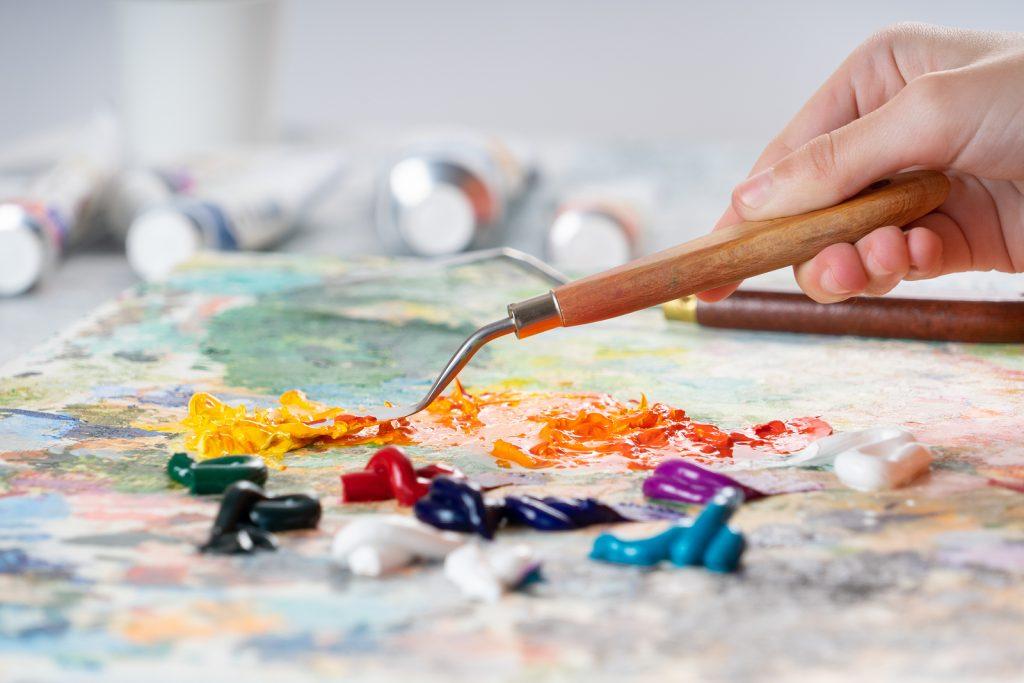You might have heard that painting with oils is more difficult than other mediums, but that’s not really the case. The act of actually painting with oils is no more difficult than working with other mediums, though the structure and drying style of oils can sometimes be seen as temperamental. In this article, we explore how to mix medium for oil painting and how to make full use of these brilliant paints.
Can You Mix Oil?
Part of the reason oils get the reputation of being difficult to work with is that unlike other mediums, oils straight out of the tube can be challenging to use due to drying times and consistency. When mixing oil paints, most artists mix them with a medium to get the most out of the oils and especially when creating a base for the painting. All oil paints already contain either Linseed or Sunflower oils.
Why Mixing Oil paints Is Essential
Why shouldn’t you use oils straight from the tube? Well, you can. But most artists prefer to add either a solvent or a medium to their oils to make it easier to work with. Mediums, or oils like linseed oil, are basically additional oils that, when added to your paint, increase the fluid consistency and slow the drying time. This is ideal for areas where you want to blend and shade as it gives you more time to work with the paint before it dries.

Solvents, such as turpentine, also increase the fluidity of oil paints but makes it dry faster. This is valuable because oils take much longer to dry than other, water based paints. This is because the water evaporates from other paints, while oil paints are required to oxidize, which takes much longer. Solvents like turpentine speed up this process.
Many artists prefer to mix their oils with both linseed oil and turpentine to create the desired consistency and finish. Adding linseed oil to paint will help thin the consistency of the paint, making it smoother and easier to mix with other colour pigments.
Mixing Takes Time To Perfect
When you’re using oil paints, you will notice that they require a lot of mixing! Once you’ve got the right consistency by mixing with mediums or solvents, you’ll need to be prepared to mix your oils to get just the right colour. Be warned that adding linseed oil to paint may affect lighter hues by adding a yellow tint. Oils come in many different shades, but to paint like a master you’ll need to understand how to mix to achieve different colours. This helps with shading, blending, and giving your painting depth and dimension.
For centuries great artists have been mixing oil paints to create the exact colour they need, and there are a few principles to follow to help make sure that you achieve the hue you’re after. If not done properly, you may find yourself muddying your paints, struggling to get it light or dark enough, and simply wasting paint.
Top Tips For Mixing Your Oil Colours
When trying to achieve a lighter colour, start with white. So for example, if you want to lighten up your Prussian Green, start with white. On your palette, begin with enough white to cover the surface area you want to cover on your painting and add a small amount of Prussian Green a bit at a time until you achieve the hue you want.
Contrary to many beginner’s beliefs, to create a darker colour you do not add black. Instead, you want to mix in just a little bit of the complementary colour. This takes us back to the basic principles of the colour wheel, in which every colour has a complementary colour on the opposite side of the wheel. So, if you want to darken your orange, add a little bit of blue. Or, to darken your red, add a little bit of green. For this, start with your original colour on your palette (orange) and add in the complementary colour bit by bit (blue) until you achieve the shade you want. Adding black loses the vibrancy of your colour, so it’s always best to stick with complementary colours for mixing.

Experiment! Don’t be afraid to try new things when mixing your colours, but it’s always best to try a test patch on your canvas. Many colours will look different on the canvas than they do on the palette, so before blending and shading it’s important to test your colour to make sure it’s right. The last thing you want to do is commit to a colour by using it in great quantities when it’s not the right one!
Source: https://www.cowlingandwilcox.com/blog/post/75-mixing-oil-paints-everything-you-need-to-know




